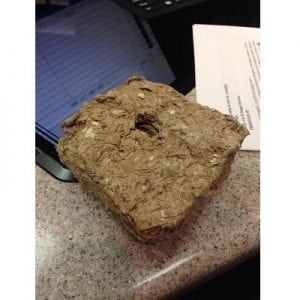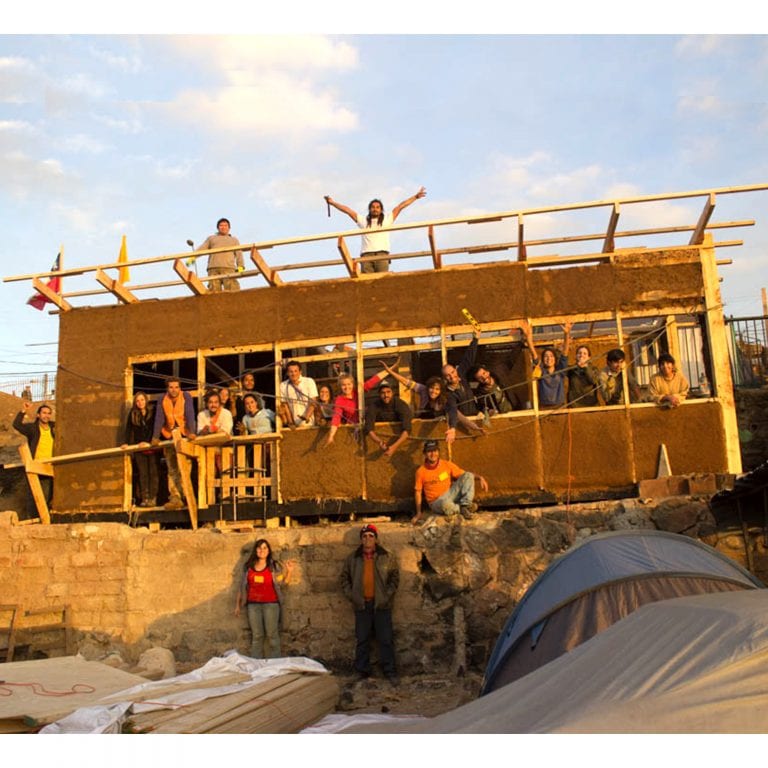
Agriculture
November 30, 2024
El Fuego del Sol Recycled Briquettes
Read SolutionImplemented by
El Fuego del Sol

Updated on March 6, 2024
·Created on November 17, 2019
Familia del Tío Beto is a permanent house for disaster relief that uses pallets, straw and soil.
Familia del Tío Beto is a permanent house design that uses pallets, straw and soil in an old technique known as “Quincha” in South America. Three units were constructed after a fire episode that affected Valparaiso in 2014. Volunteer and dwellers labor (without previous experience in construction) were led by a team of professional architects.
*Please note that building designs are being included as “products” in the Habitat Sector of the Solutions Library to allow readers to learn from how projects were designed and constructed and how they are serving the occupants, whether effective or ineffective.
Market Suggested Retail Price
$3,255.00
Target Users (Target Impact Group)
Distributors / Implementing Organizations
Manufacturing/Building Method
The building design was developed by Minga Valpo in Valparaíso (Chile) for three different families that lost their houses after a fire episode in 2014. It was constructed using dwellers and volunteer labor led by the architects team. Education in technical construction skills were provided through workshops led by experts in bioconstruction.
Intellectural Property Type
Select Type
User Provision Model
The building's materials were recycled or came from donations through Minga Valpo.
Distributions to Date Status
As of 2016, 3 houses were constructed under the Minga Valpo.
Unique Design (Yes/No)
Yes
Intended number of occupants (#)
5 people
Duration of construction (days)
7 days
Footprint area (m²)
Number of storeys
1
Material composition
Flammable flash point temperature (ºC)
Unknown
Thermal insulating capacity (m²*K/W)
Straw: R2.4 – R3.0
Maximum wind speed (km/h)
Unknown
Structural Occupancy Category
Seismic Design Category
Unknown
Suitable Climates
Temperate, Tropical
Design Specifications
The building uses an old construction technique known as "quincha" in South America. The walls were made using 2" x 6" pallets for the wooden frame and filled them with straw for thermal insulation. The exterior is covered with a mixture of mud and straw to give the wall thermal mass. After a scratch coat is applied to the exterior mud layer and dried, a layer of lime plaster is applied to make the wall waterproof. Recycled glass bottles can be integrated in the open window elements of the building for decoration. All materials are easily found locally and were used to build all the walls of the three houses. The roof is made of corrugated metal panel. The house measures 36m².
Technical Support
The building can be maintained by local labor with earth construction experience.
Replacement Components
Local materials used in construction can be replaced if needed.
Lifecycle
A well-constructed and maintained quincha building can last decades.
Manufacturer Specified Performance Parameters
Minga Valpo states that the building is energy efficient, can be constructed from sustainable and recycled materials, and can be self-constructed by its users.
Vetted Performance Status
No testing has been completed.
Safety
Builders should wear appropriate protective equipment such as hardhats, gloves and safety glasses while working to protect against physical injury commonly associated with heavy construction.
Complementary Technical Systems
None
Academic Research and References
Jorquera Silva, N., 2014, Aprendiendo del Patrimonio Vernáculo: tradición e innovación en el uso de la quincha en la Arquitectura Chilena. Revista de Arquitectura V.20 N.29, Universidad de Chile.
Marín, S., 2019, Mercado Puerto Valparaiso (MPV): modelo de gestión cooperativa para la regeneración de la identidad barrial dentro del área portuaria del Sitio del Patrimonio Mundial en Valparaiso, Chile. Universidad Politécnica de Cartagena
Compliance with regulations
The project complies with the Valparaiso Masterplan: Normativa Nº 2013 del 1981.
Other Information
This video is about the fire in Valparaíso and the neighbourhood reconstruction process.
Valparaíso Fire / Chile 2014-2016

Agriculture
November 30, 2024
Implemented by
El Fuego del Sol
Have thoughts on how we can improve?
Give Us Feedback